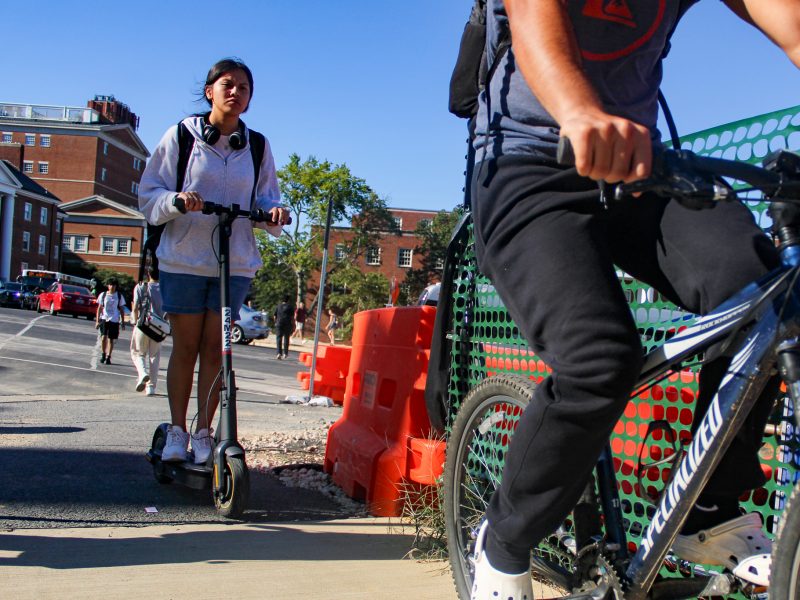When senior anthropology major Abby Hardy arrived at the University of Maryland during freshman year, she wasn’t able to find a community of other Native and Indigenous students.
That first semester was rough, she said, and making new friends was difficult.
But last year, she discovered the Native and Indigenous Student Union after attending a heritage month event. The organization allowed her to connect with other Native and Indigenous students, she said.
“It definitely was a shock junior year when it was like, ‘Oh, there is something for me here on campus,’” said Hardy, who is now NAISU’s president.
Students and community members at this university gathered for events throughout November to celebrate Native and Indigenous Heritage Month. This year’s theme is “Back to Our Roots,” which highlights the strength of community building in Native and Indigenous spaces.
Some of November’s events included a vendor market featuring Native art, a plant painting night and the creation of a community altar as part of a Día de los Muertos event.
[UMD first-generation students club hopes to provide community, resources for families]
Hardy said she believes this university is not doing enough to support Native and Indigenous students.
She added that Native and Indigenous students at this university have to make additional efforts to make events like the artists market happen — which she said was only possible through funding from a Pepsi grant.
“We’ve made progress,” Hardy said. “But I feel like it’s also the people that are behind the scenes that are really making it happen.”
In a statement to The Diamondback on Nov. 20, this university highlighted its land acknowledgement written in 2022, which states this university’s campus resides on the ancestral lands of the Piscataway Conoy Tribe.
The land acknowledgement “calls us to protect and respect these lands, while exploring how to work collectively toward justice and meaningful solutions,” the statement read.
Native and Indigenous communities, both locally and nationally, are important to this university and “deserve to be acknowledged, celebrated and welcomed,” according to the statement.
This university’s engineering school is also working with representatives of the Piscataway Conoy Tribe to 3D print models of three treaty medals from the mid-late 1600s and 1700s, the university wrote.
[UMD to begin renovations for 5 cultural centers over winter break]
Kyrsha Balderas, coordinator for Native and Indigenous student involvement and community advocacy, said this year’s observation of the month shifted efforts toward building community and providing a space for Native and Indigenous students at this university. In the past, the month has focused on educating non-Native community members, she said.
“Education is there, it’s just not a focus as much anymore,” Balderas said.
Balderas added that while it can be hard for students to put themselves out there, it’s still the best way for Native and Indigenous students to find community at this university.
Xandie Iti Lusakbi, the graduate coordinator for Native and Indigenous student involvement and community advocacy, said the month helps bring awareness about the issues facing Native and Indigenous communities, but also helps to build community for native students on campus.
The criminology and criminal justice doctoral student added that some people at this university aren’t aware of the Native communities on campus.
“They don’t understand that we’re here in these spaces and in higher education, just because we’re such a small portion of the overall population,” Iti Lusakbi said.
About 0.1 percent of students at this university identify as American Indian or Alaska Native, according to data from this university’s institutional research, planning and assessment office.
Junior information science major Linh Miyamoto said it was hard for her to find other Native and Indigenous students when she first arrived at this university, especially coming from a community in Washington state with a large native presence.
Many Native and Indigenous students also tend to hide their identity or are less open about it at a predominantly white institution like this university, she added.
Miyamoto, the vice president of NAISU, said she hoped events throughout the month show other Native and Indigenous students there is a community for them on campus.
Hardy encouraged Native and Indigenous students to attend future NAISU events.
“Be willing to try new things and try other experiences that you may not normally just go to,” she said.



